Unfunded Access for All works at Britain’s stations has left Department for Transport ministers ‘considering their options’. Mel Holley unpicks the detail.
What links Labour MPs Chris Hinchliff, Rachel Hopkins, Sarah Owen and Steve Race, Conservative MPs Priti Patel, Paul Holmes and Blake Stephenson, Lib Dem MPs Wendy Chamberlain and Helen Morgan, Green MP Siân Berry and Reform UK MP James McMurdock?
Unfunded Access for All works at Britain’s stations has left Department for Transport ministers ‘considering their options’. Mel Holley unpicks the detail.
What links Labour MPs Chris Hinchliff, Rachel Hopkins, Sarah Owen and Steve Race, Conservative MPs Priti Patel, Paul Holmes and Blake Stephenson, Lib Dem MPs Wendy Chamberlain and Helen Morgan, Green MP Siân Berry and Reform UK MP James McMurdock?
Apart from their all being MPs, there is a railway link.
Now try linking Baldock, Leagrave, Hedge End, Leuchars, Northwich and Marks Tey.
The answer to the latter is that they are all stations in the now-suspended Access for All programme. As to the former, these MPs (along with many others) have all asked questions in Parliament along the lines of: “When will they be upgraded?”
The stock answer, usually delivered by Local Transport Minister Simon Lightwood, has since July 2024 followed the same script.
“Ministers are carefully considering the best approach to the Access for All programme. We are unable to comment on next steps regarding specific stations, including [insert station name here]. Once we can confirm our approach to Access for All programme, we will ensure MPs and stakeholders are informed.”
That’s a slight modification from July when, shortly after winning the General Election, the line was: “Given the short time since the General Election, I regret I am not yet able to comment on next steps regarding specific station applications through the Access for All programme [including, insert station name here].
“However, please be assured that we are committed to improving the accessibility of the railway and recognise the social and economic benefits this brings to communities.”
Before we delve into the detail, it’s important to explain what ‘Access for All’ (AfA) really means. You may initially think of ‘wheelchair user’, but that’s only one type of passenger that AfA is intended to help.
Like the similar (and also not entirely clear) Transport for London-descriptor for Tube lines of ‘step-free access’, it means that someone can arrive at street level and get to the platform by using lifts, long ramps at footbridges, or other methods.
You’ll have unknowingly used AfA facilities (or similar) at many stations.
At Peterborough (RAIL’s home station), after the demise of Royal Mail traffic more than 20 years ago, and the later demolition of the adjacent sorting office, ramps that once were the exclusive home to battery-powered tugs, with their rattling lines of BRUTE cages, are now the signed routes for those with pushchairs, bicycles, and wheeled suitcases.
The ramps themselves are little changed - they are functional, but no more.
But in more recent times, they have been supplemented by lifts to each of the four banks of island platforms, feeding into the main passenger footbridge.
This is much as the bus industry found 30 years ago, when legislation to introduce ‘low-floor’ kneeling buses with access ramps meant that while wheelchair users benefited (as was the law’s aim), it also led to a massive increase in usage by mums with buggies.
Together with the ‘heavy luggage’ brigade, this market forms (in terms of volume) the biggest beneficiaries of AfA - and in turn helps to make the business case.
In the current climate of needing to increase rail travel, to grow revenue, and to narrow the subsidy-revenue gap, surely making the railway an easier choice is a ‘no-brainer’?
While AfA is relatively new, having been launched in 2006 and covering England, Wales and Scotland, its work has been ongoing for much longer in different forms.
But what AfA did was to put in place a nationwide scheme, directly funded by the Department for Transport (with occasional support funding from other parties), with a list and clear timetable of delivery.
In other words… a clear plan.
So, why are MPs (of all parties) so interested in AfA that they continually raise the matter in Parliament?
It’s because the ‘buy in’, in terms of “confirmed support of the local MP”, was one of the criteria required for a station to even reach the initial feasibility stage.
As well as banging a local drum, it’s a specific pledge MPs made to their constituents, which is why even Labour members are regularly asking the same questions as those on the opposition benches.
Within a matter of weeks after the new Labour government took office on July 5 2024, a question mark appeared over the Access for All programme.
In one of its final actions, the previous Conservative government had announced (on May 24 2024) that a “further 50 stations” had been “selected for initial feasibility work and if that is successful, will be taken forward as part of the AfA programme”.
These 50 were selected from a list of 310 stations nominated by Network Rail, train operating companies (TOCs) and other strategic transport organisations such as Combined Authorities (Table 7).
They were to be funded by £350 million released from budgets by the cancellation of the Birmingham-Manchester leg of HS2.
However, they never made it into the AfA programme before the election, and they have now disappeared from view.
The first signs of trouble came on July 30 2024. Answering a parliamentary question, Lightfoot admitted that there was no delivery timetable for the accessibility works, leading to speculation that there might not be any money either.
At the time, it meant that up to 78 stations in line for upgrades were under threat, owing to the expected forthcoming public spending squeeze. This included 28 stations that had been announced for improvement by the previous Conservative government way back in 2019 (and even earlier), but where work was still to start.
Asking for the government’s timetable for delivering AfA at Upminster station, local MP Julia Lopez was told by Lightwood that “we are carefully considering the best approach” to the AfA programme, but “given the short time since the General Election, I regret I am not yet able to comment on next steps”.
By that stage, then-Transport Secretary Louise Haigh had already commissioned an internal review of DfT’s capital spend portfolio, having told Parliament on July 30 that the new government had “inherited £2.9 billion of unfunded transport commitments”.
She said there had been “a lack of openness with the public about the status of schemes”, and that “communities have been given hope for new transport infrastructure, with no plans or funds to deliver them”.
A timescale for the review was yet to be announced, but Haigh said: “We will bring in external expertise and move quickly to make recommendations about current and future schemes.”
Six months later, we don’t seem to be much closer. What we do have, thanks to a detailed response from the DfT to RAIL’s enquiries, is a list of all stations in the AfA scheme and their status.
This is the first time a comprehensive up-to-date list has been made public, and RAIL brings it exclusively to you (see tables - previous page).
It reveals that there are 105 stations in the scheme, of which 47 have now been delivered, with a further 28 under construction (Table 1).
While the total value of AfA is more than £800m, much of that has already been spent or committed. Only £188m is estimated as remaining to be spent on schemes currently at the ‘design’ stage, to which a rough £5m could be added for Cathays, where the figure is not available.
Every penny counts in the new era of ‘quasi-austerity’, but £193m isn’t a massive amount for a passenger railway that turns over £15bn a year.
Cost overruns plague ‘brownfield’ construction in all sectors, which is why warehouse developers and house builders prefer the ‘clean sheet’ of an empty field.
The reasons are manyfold, but normally are the result of ‘unknowns’ - as work at Warwick station demonstrates.
Work to install two lifts at the former GWR station (now part of Chiltern Railway’s portfolio) started in February 2023. By August, work had stalled after the unexpected discovery of non-recorded foundations.
These are believed to be from the first station built on the site in 1852, which lasted 42 years before being destroyed by fire in 1894. While plans of the current station (built 130 years ago) are available, they don’t show these foundations, which are where the lift shafts are to be built.
Rip them out? No, they cannot be disturbed as they are “integral to the existing building and platform”, reported Network Rail.
A redesign has solved the problem, but it’s just one example. Other delays have been caused by access issues to stations for construction, or in at least one case the need to buy a small piece of land.
But we digress. Looming is the Comprehensive Spending Review, which will set out how much money each government department has to spend.
At the Autumn Budget on October 30 2024, Chancellor Rachel Reeves set out the outcome of Phase 1 of the Spending Review, which confirmed departmental budgets for 2024-25 and set budgets for 2025-26.
She also announced the total level of funding planned for Phase 2 (‘the envelope’), which will conclude and be published in “late spring” 2025.
Says HM Treasury: “Phase 2 will prioritise delivering the government’s missions. As part of this, departments will be expected to make better use of technology and seek to reform public services, to support delivery of the government’s plans for a decade of national renewal.”
For the DfT, it has spending already committed to, such as Network Rail’s five-year Control Period 7 (CP7) to April 1 2029. The £45bn spending is largely government-funded (£30bn from Westminster, Holyrood and Cardiff), and cannot be altered.
Unknown stuff is scary, and the latest noises emanating about the spending review has led to experts dubbing Labour’s plans for belt-tightening as “miserable”, and warning that they may risk cuts - even before the recent rise in borrowing costs raised the prospect of a further squeeze.
It’s been widely reported that Chief Secretary to the Treasury Darren Jones wrote to colleagues last month warning that “success will require ruthless prioritisation” - which can’t have gone down well with ministers.
In the face of this, in December Lightwood told the Commons that the DfT “recently” completed an accessibility audit of all 2,577 stations across Great Britain.
“This data is being used to guide how the government and rail industry can most efficiently invest through programmes such as AfA,” he said.
RAIL asked to see the report, produced by consultancy AtkinsRéalis. The answer was no, but the helpful DfT press office tells us that an “update on the accessibility audit of all Britain’s railway stations will be provided in due course”.
As for when the DfT expects to announce the funding programme and details of the revised AfA programme, it tells us: “The government is committed to improving access to the rail network and we will provide updates on the Access for All programme in due course.”
Lightwood reminds us that: “Details on the accessibility and facilities for each station can be found on the National Rail Enquires or individual train operating company websites.”
Perhaps his announcement might also include a measure to make it easier for casual rail users to see which stations are ‘step-free’?
TfL uses a wheelchair symbol (which doesn’t help those with general mobility issues or heavy luggage to immediately understand that they are included).
Is it time for a new symbol? And for that to be applied to all network maps?

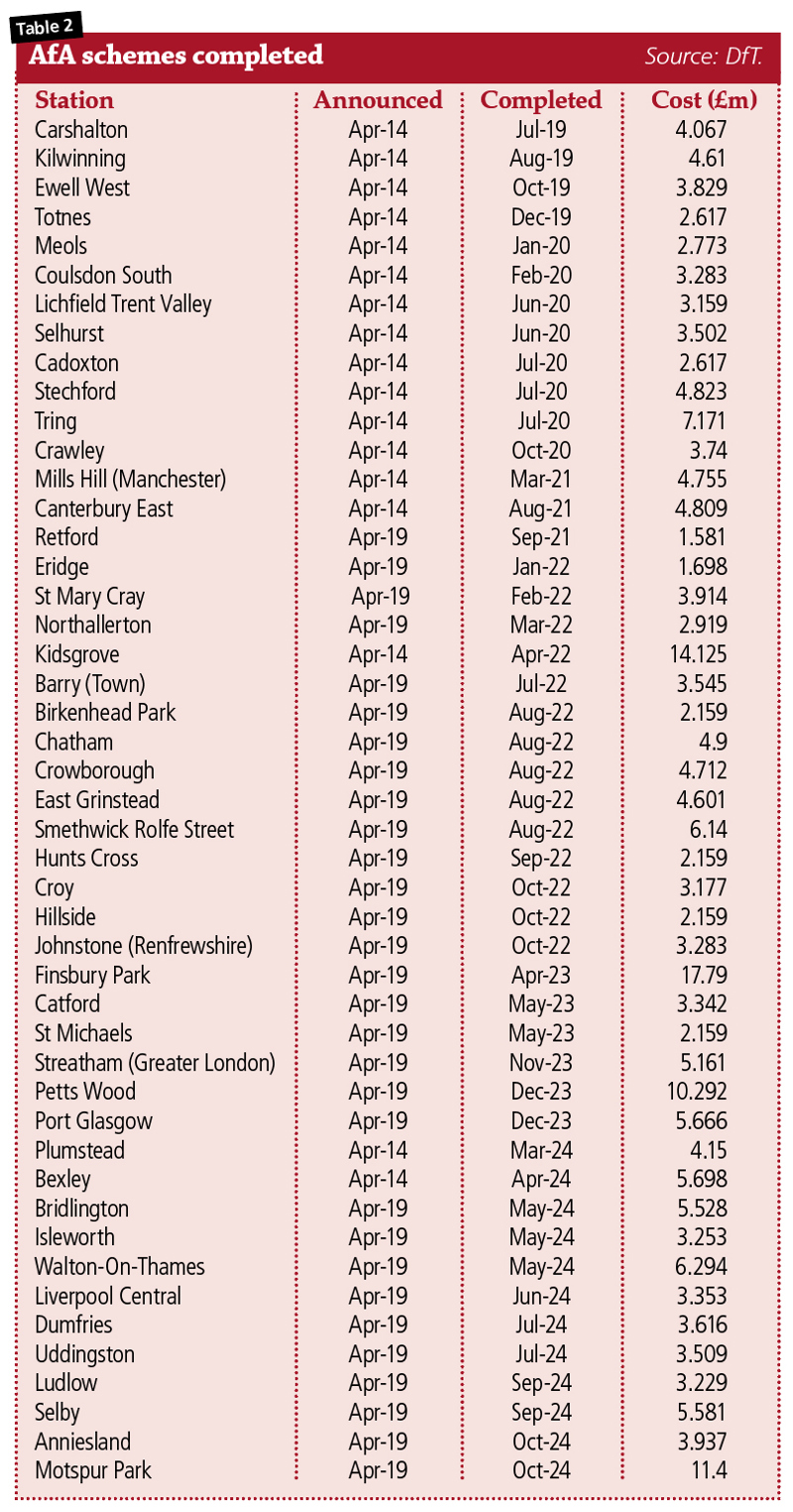

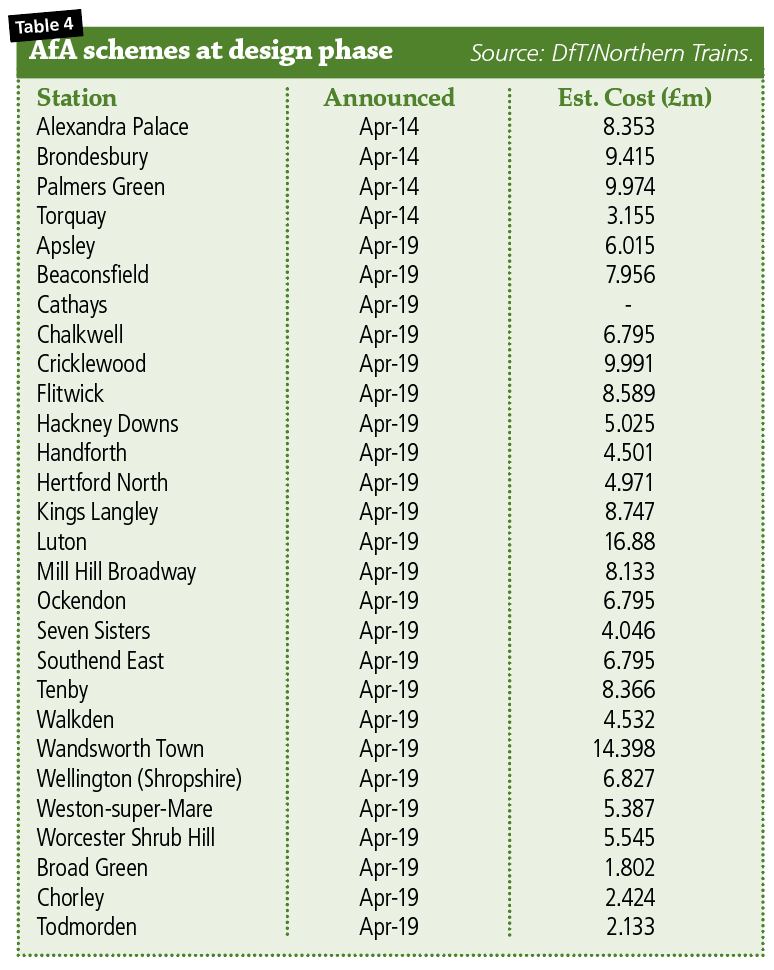
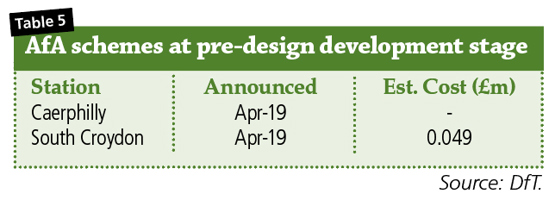

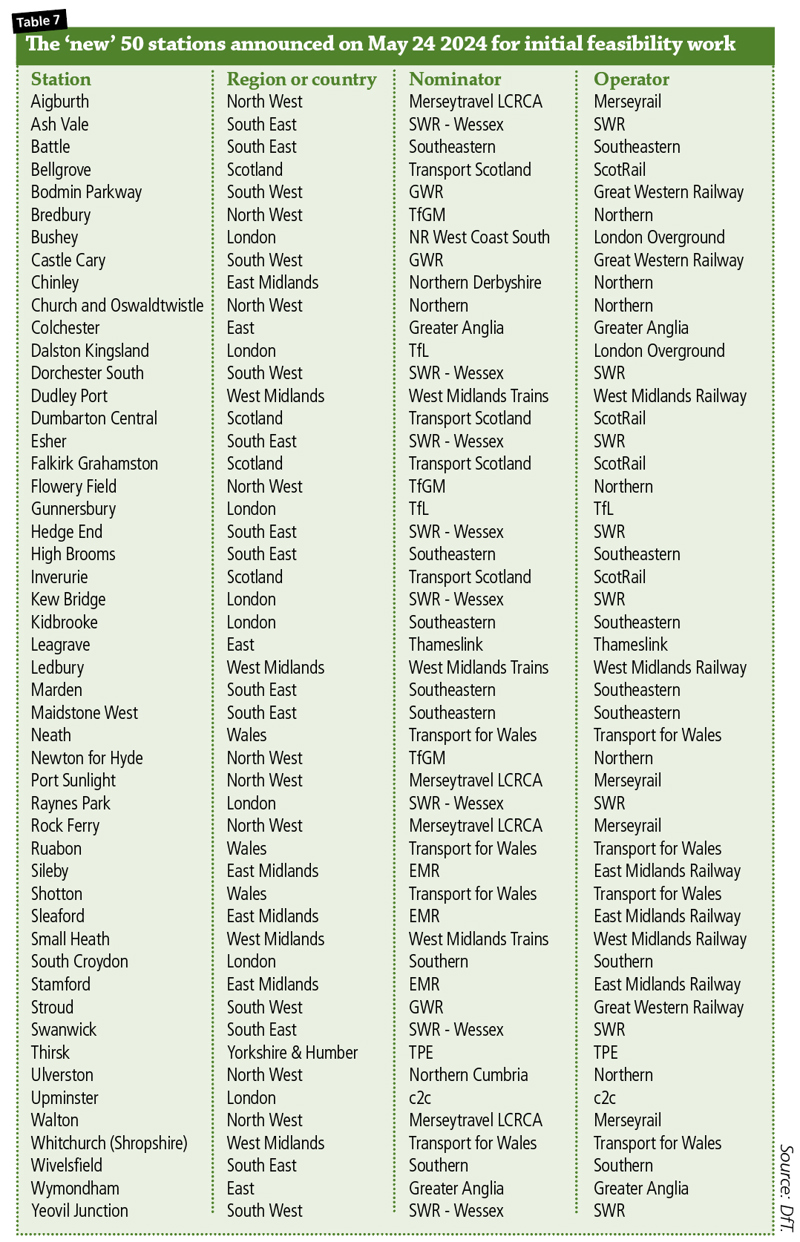
Login to continue reading
Or register with RAIL to keep up-to-date with the latest news, insight and opinion.

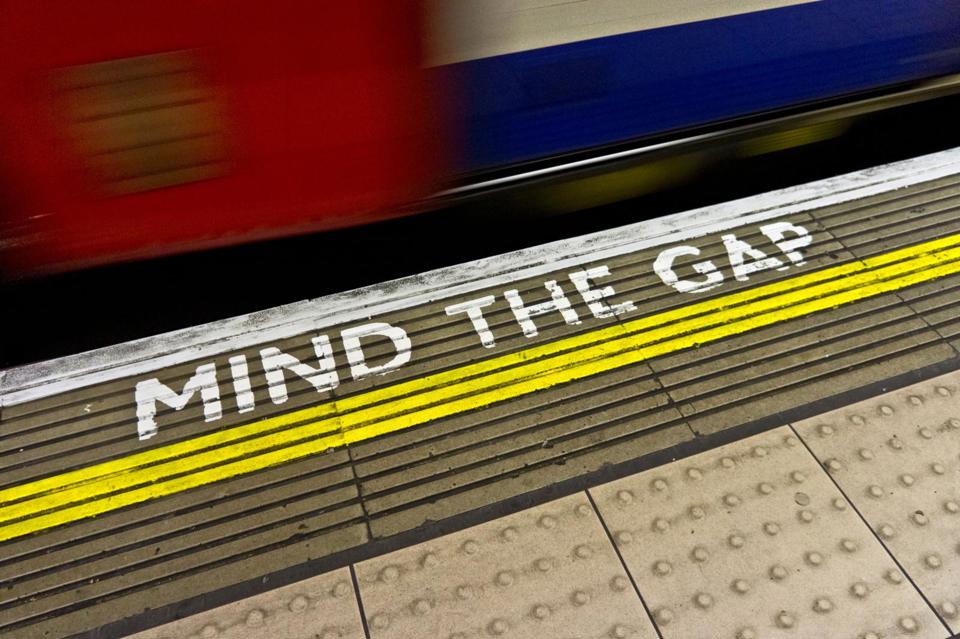

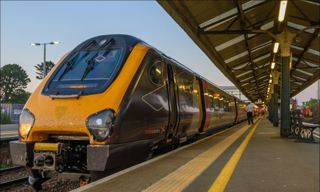
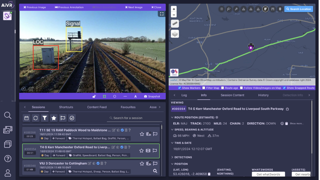
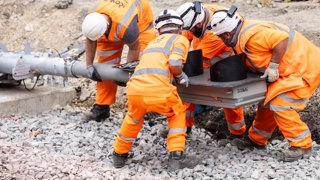
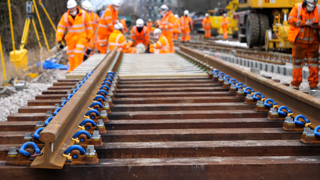











Login to comment
Comments
No comments have been made yet.